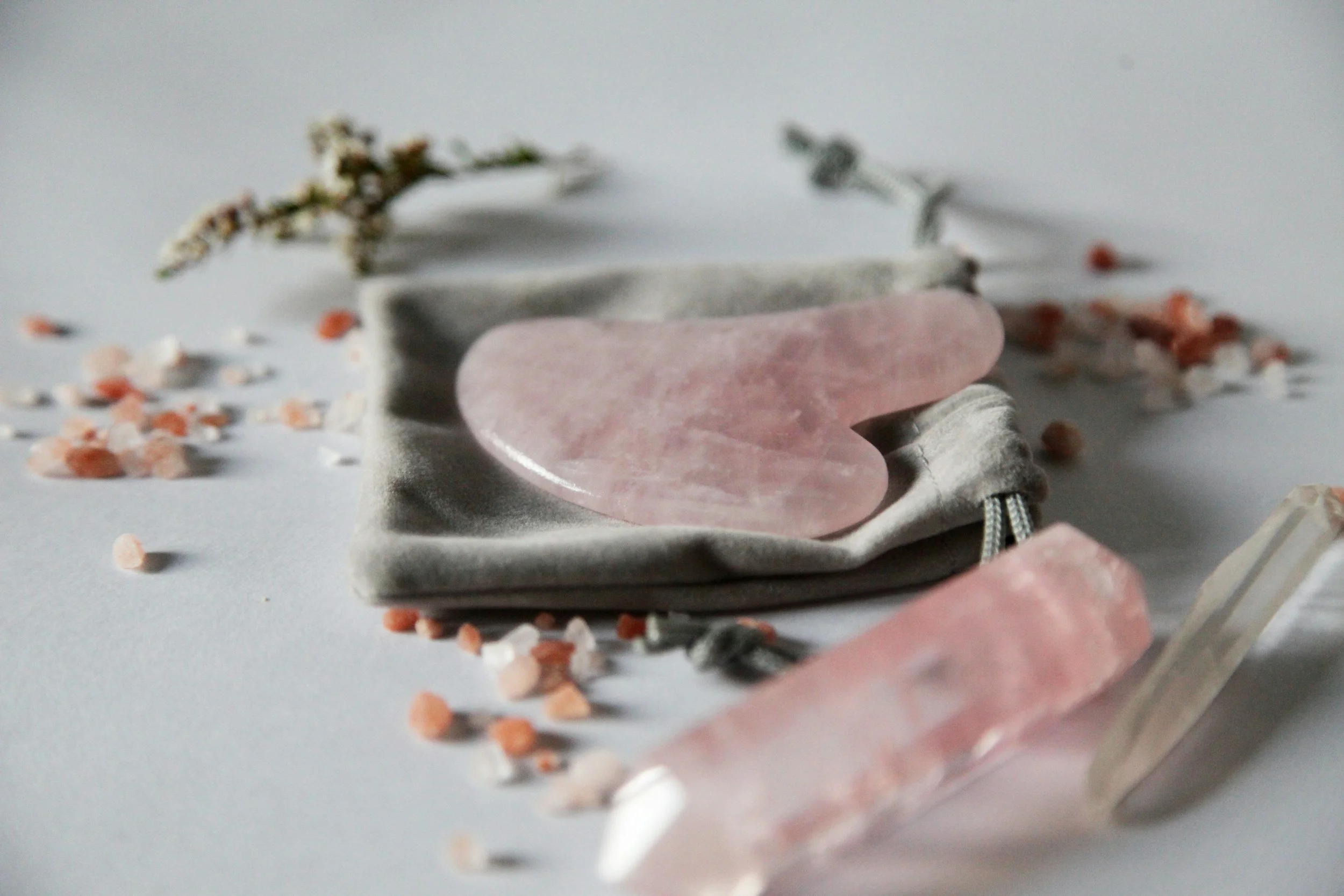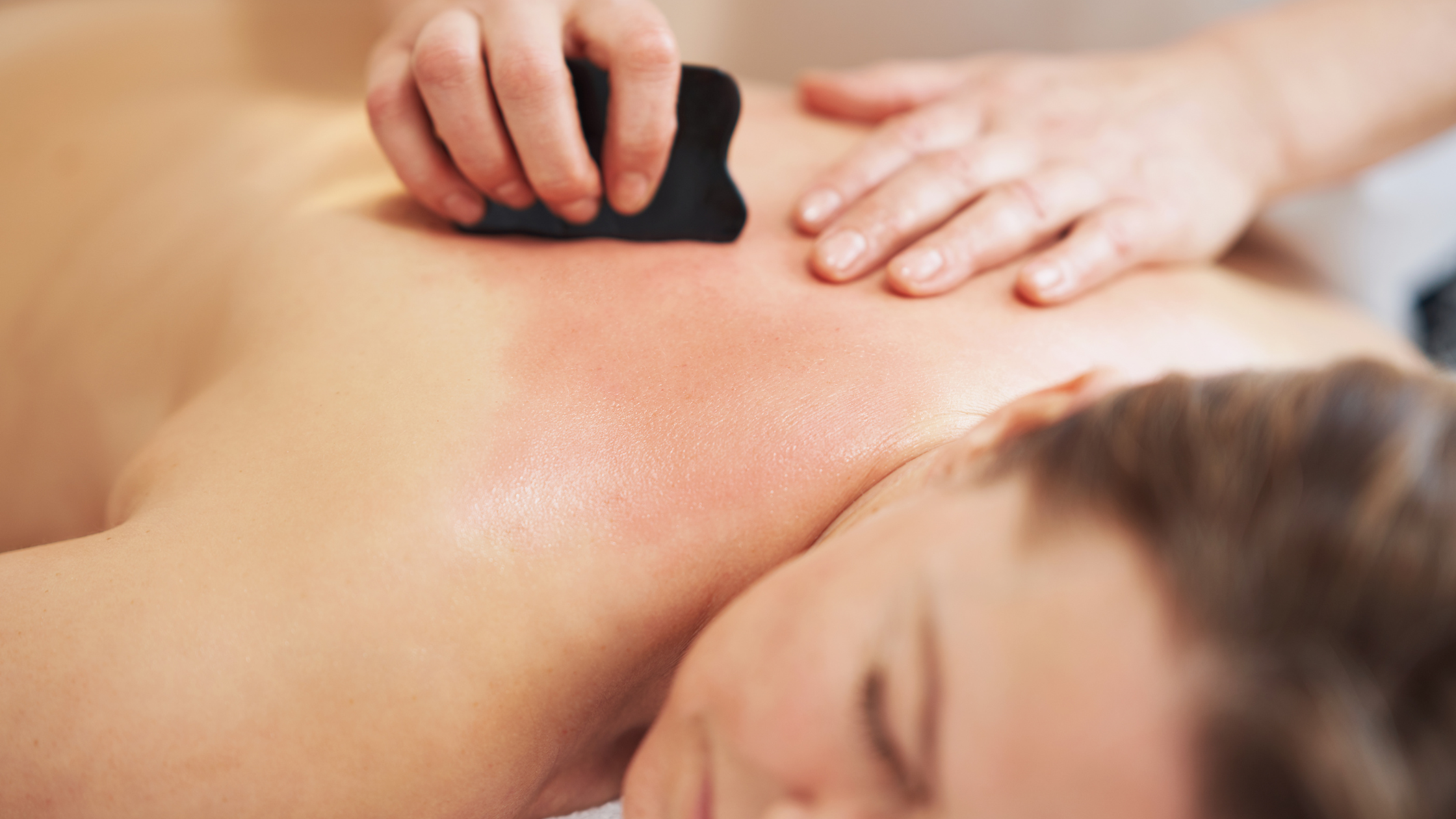
Gua Sha
What does Gua Sha do?
In TCM, Gua Sha is seen as a method to release stagnation and promote the flow of Qi and Blood through the meridians. It’s used when there is stagnant Qi and Blood, which TCM believes is often the cause of pain, tension, or illness.
The term “Sha” refers to the reddish or purplish marks that appear after scraping — seen as a release of pathogenic factors like wind, cold, heat, or dampness trapped in the body.
From a TCM perspective, Gua Sha can:
Break up Qi and Blood stagnation: pain and disease are often attributed to stagnation. Gua Sha encourages smooth flow.
Releases heat and toxins: by drawing out “Sha,” it helps expel excess heat and toxins from the surface and deeper layers.
Stimulates the immune response: it is believed to trigger the body’s natural healing and immune function.
Opens the pores and promotes detoxification: the scraping opens superficial layers of the skin, promoting sweating and detox.
Application of lubricant: oil or balm is applied to the skin to reduce friction and protect the skin. Herbs or medicated oils may be used to provide supporting effects (e.g., cooling, warming, moving Qi).
Scraping (Gua) technique: the skin is then scraped in one direction, often downward or along the meridian pathway. The strokes are firm but controlled, using repeated motion to bring up "Sha" — red or purple petechiae (tiny dots or patches). Gua Sha may be applied for 5–15 minutes in one area, depending on response and sensitivity.
Observation of “Sha”: the appearance of “Sha” indicates stagnation being released.
What to expect during the treatment
It may feel like firm massage pressure or mild scraping.
The skin often turns red or purple where scraping is done—this is normal and typically fade within 3–5 days.
After treatment, you might feel relaxed, energised, or even slightly sore (similar to a deep tissue massage).
Aftercare: it is important to keep the treated area warm and protected from wind or cold, as the pores are open. It is encouraged to rest, hydrate, and avoid cold exposure or rigorous exercise.
What to expect after the treatment
Sources:
Braun, M., Schwickert, M., Nielsen, A., Brunnhuber, S., Dobos, G., Musial, F., Lüdtke, R., & Michalsen, A. (2011). Effectiveness of Traditional Chinese “Gua Sha” Therapy in Patients with Chronic Neck Pain: A Randomized Controlled Trial, Pain Medicine, 12(3), Pages 362–369, https://doi.org/10.1111/j.1526-4637.2011.01053.x
Chen, T., Liu, N., Liu, J., Zhang, X., Huang, Z., Zang, Y., Chen, J., Dong, L., Zhang, J., & Ding, Z. (2016). Gua Sha, a press-stroke treatment of the skin, boosts the immune response to intradermal vaccination. PeerJ, 4. https://doi.org/10.7717/peerj.2451
Kwong, K.K., Kloetzer, L., Wong, K.K., Ren, J.Q., Kuo, B., Jiang, Y., Chen, I., Chan, S.T., Young, G.S., Wong, S.T.C. (2009). Bioluminescence imaging of heme oxygenase-1 upregulation in the gua sha procedure. Journal of Visualized Experiments, 28(30), 1-3. https://doi.org/10.3791/1385
Lee, IT., Yang, CC. & Yang, CM. Harnessing peroxisome proliferator-activated receptor γ agonists to induce Heme Oxygenase-1: A promising approach for pulmonary inflammatory disorders. Cell Commun Signal, 22(125), 1-17. https://doi.org/10.1186/s12964-024-01501
Nielsen, A., Kligler, B., & Koll, B.S. (2012). Safety protocols for Gua sha (press-stroking) and Baguan (cupping). Complementary Therapies in Medicine, 20(5), 340-344. https://doi.org/10.1016/j.ctim.2012.05.004
Nielsen, A., (2009). Gua sha research and the language of integrative medicine. Journal of Bodywork and Movement Therapies, 13(1), 63-72. https://doi.org/10.1016/j.jbmt.2008.04.045
Nielson, A. (2013). Gua sha: A Traditional Technique for Modern Practice. Elsevier Ltd.
Tang, K.W. (2020). Gua Sha: An Ancient Therapy for Contemporary Illnesses. World Scientific Publishing Co. Pte. Ltd.
Zhongchao, W. (2018). Gua Sha Scraping Massage Techniques: A Natural Way of Prevention and Treatment through Traditional Chinese Medicine. Shanghai Press and Publishing Development Co., Ltd



